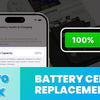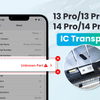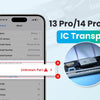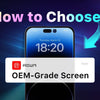Hard OLED Screen for iPhone, What You Need to Know
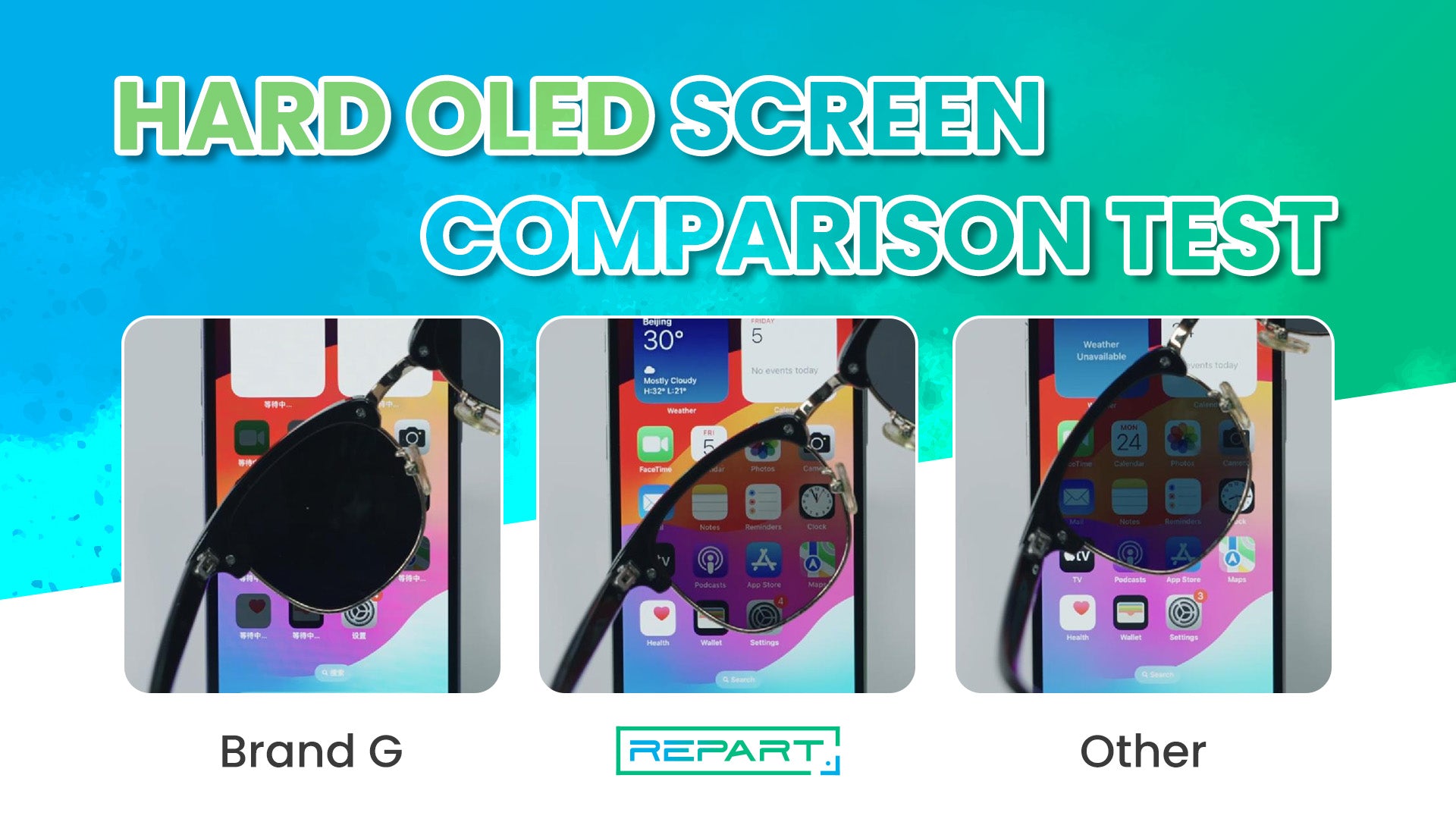
In the aftermarket for iPhone repair, the demand for alternative display assemblies has grown greatly. Repair professionals and refurbishing facilities are constantly seeking the best options to strike a balance between quality, performance, and price. With this demand, the market has responded by offering several types of aftermarket screens. Among these, Hard OLED screens have emerged as a popular alternative.
But what exactly are Hard OLED displays, how do they differ from Soft OLED, and how do you choose the right one? Let’s get to these questions to help you make an informed decision when selecting an aftermarket iPhone screen.
What is Hard OLED?
Hard OLED screens for iPhone are constructed using a rigid glass substrate. This means that the OLED layers—the organic material responsible for emitting light—are built on a hard, inflexible surface. Soft OLED, on the other hand, uses a flexible plastic substrate. Soft OLED is typically what Apple uses in its original iPhone displays. Hard OLED screens are primarily manufactured for the aftermarket as a more affordable replacement option for original screens.
Why is Hard OLED Manufactured?
The production of Hard OLED screens for iPhones comes from the demand for lower-cost alternatives in the aftermarket. With iPhones being one of the most popular smartphones in the world, the need for affordable repair options is crucial.
Manufacturing Hard OLED screens is cheaper than producing Soft OLED screens because the rigid glass substrate is less expensive than flexible plastic. Additionally, the manufacturing process for Hard OLED is simpler, which also reduces production costs.
Hard OLED provides an affordable solution. While it may not offer the same level of performance as Soft OLED, Hard OLED still delivers decent image quality.
How to Choose the Right Hard OLED Screen
At REPART, we understand the need for peace of mind and flexibility when selecting a replacement screen. But with so many options available, many of you have been curious about the differences between these products and what to expect when choosing one over the other. That's why we carried out a test of iPhone 12 Hard OLED screens among REPART and other two brands. This may help you select the right screens you need.
Hard OLED Screen Comparisons
| Feature | Brand G | REPART | Brand Other |
| Thickness (mm) | 1.68 | 1.57 | 1.55 |
| Chin Bezel (mm) | 3.98 | 3.05 | 3.11 |
| Touch Function | Responsive | Responsive | Responsive |
| Brightness Aver. (nits) | 712 | 650 | 625 |
| Color Temperature Aver. | 6875 | 6827 | 6828 |
| Color Gamut (5%) | 125.69 | 126.22 | 111.39 |
| Visible Through Sunglasses | No | Yes | Yes |
| Soldering Pad | Not tinned | Tinned evenly | Tinned evenly |
Each type of Hard OLED has its unique strengths and trade-offs. Each of these features plays an important role in the performance. Below, we break down why these differences matter and how they can impact your choice.
Thickness: Brand G Hard OLED is the thickest of the three at 1.68mm, which might make it feel bulkier in-hand compared to the SL Hard OLED at 1.55mm. Thicker screens may protrude more, affecting aesthetics.

Chin Bezel: REPART Hard OLED has the slimmest chin bezel at 3.05mm, offering a high-screen-to-body ratio, close to the original screen viewing window. Brand G Hard OLED has a noticeably larger bezel.

Touch Function: All three screens provide 3D touch and offer similar touch responsiveness with minimal lag. This ensures a smooth user experience, whether scrolling, typing, or gaming.
Brightness: For optimal outdoor visibility, the Brand G Hard OLED at 712 nits offers the highest brightness, while REPART Hard OLED provides 650 nits, similar to the original screen. Although higher brightness enhances visibility, it can also result in increased power consumption and heat generation.

Color Temperature: The three screens have very close color temperature, Brand G 6875K, REPART 6827, Brand Other 6828. This indicates that they all produce a slightly cool, bluish-white tone, compared to OEM's 6500K.
Color Gamut: It is the range of colors a display can produce, with a wider gamut offering more vibrant, accurate colors. Color gamut is typically measured using a test that involves displaying pure red, green, and blue images. REPART Hard OLED has the best color accuracy with a color gamut of 126.22%.

Sunglass Visibility: Both REPART and Brand Other allow for visibility through polarized sunglasses, a crucial feature for outdoor use. However, Brand G Hard OLED is not visible through sunglasses from certain angles, which can be a drawback outdoors.

Soldering Pad Quality: This pad is used to solder the original screen’s touch IC, which removes the display “unknown part” message caused by Apple’s part pairing policy. REPART Hard OLED has evenly tinned soldering pads, which increase the success rate of soldering. Brand G has a not very well tinned pad, and Brand Other's pad is not tinned at all.

Conclusion: Which Hard OLED is Right for You?
Choosing the right Hard OLED screen depends on your priorities—whether it’s brightness, color accuracy, durability, or repairability. REPART Hard OLED offers the slimmest chin bezel, a slightly wider color gamut, and an evenly tinned soldering pad. Brand G Hard OLED provides the highest brightness, while REPART's brightness is close to OEM's. Brand Other Hard OLED is slightly thinner than REPART's. Choose the one that fits your need.
-
Posted in
hard oled, hard oled screen

